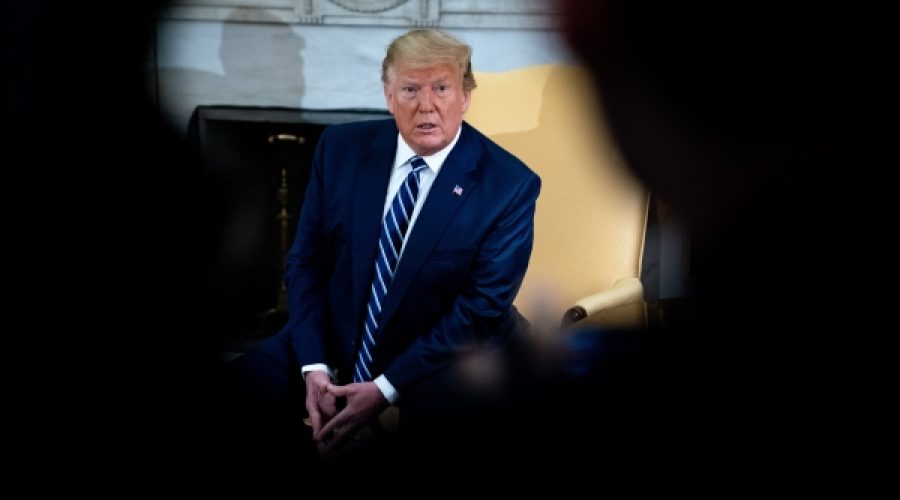Impact of Trump’s Trade War on Global Economy: Key Insights for Investors and Business Owners in Oman
U.S. President Donald Trump’s Tariff Decisions: A Timeline of Key Developments
Since taking office on January 20, President Donald Trump’s tariff policies have significantly impacted financial markets and contributed to uncertainty in the global economy. Below is a timeline of the major events related to these decisions:
-
February 1: Trump imposes a 25% tariff on most imports from Mexico and Canada, and a 10% tariff on goods from China, linking these measures to curbing the flow of fentanyl and illegal immigration into the U.S.
-
February 3: The President suspends his tariff threat against Mexico and Canada, agreeing to a 30-day pause in exchange for certain border and crime enforcement concessions. A similar agreement is not reached with China.
-
February 7: Trump delays tariffs on low-cost packages from China, pending the confirmation of adequate procedures by the Commerce Department to handle tariff collection.
-
February 10: Tariffs on steel and aluminum are raised to a flat 25%, with no exceptions or exemptions.
-
March 3: Trump announces that the previously mentioned 25% tariffs on goods from Mexico and Canada will take effect on March 4 and doubles the tariffs on all Chinese imports related to fentanyl to 20%.
-
March 5: Following discussions with automotive leaders, Trump agrees to postpone tariffs for one month on certain vehicles from Canada and Mexico.
-
March 6: Goods from Canada and Mexico are exempted from the 25% tariffs under a North American trade agreement for one month.
-
March 26: A 25% tariff on imported cars and light trucks is unveiled.
-
April 2: Trump announces global tariffs starting at 10% across all imports, with higher rates for certain trading partners.
-
April 9: Amid a financial market downturn, Trump pauses most country-specific tariffs that had been implemented just a day earlier, while maintaining the 10% blanket duty on nearly all U.S. imports.
-
April 13: Exclusions are granted for steep tariffs on smartphones, computers, and other electronics primarily sourced from China.
-
April 22: The Trump administration initiates national security investigations under Section 232 of the Trade Act of 1962 into imports of pharmaceuticals and semiconductors, aiming to impose tariffs on these sectors.
-
May 4: A 100% tariff is imposed on all movies produced outside the U.S.
-
May 9: Trump and British Prime Minister Keir Starmer announce a limited trade agreement that maintains 10% tariffs on British exports, expands agricultural access, and reduces U.S. duties on British car exports.
-
May 12: The U.S. and China agree to temporarily reduce reciprocal tariffs, with the U.S. cutting additional tariffs on Chinese imports from 145% to 30%.
-
May 13: The low-value "de minimis" tariff on Chinese shipments is reduced from 120% to 54% for items valued at up to $800.
-
May 23: Trump recommends a 50% tariff on goods from the European Union effective June 1.
-
May 25: He retracts the 50% tariff threat against EU imports, extending the deadline for negotiations until July 9.
-
May 28: A U.S. trade court blocks Trump’s tariffs, ruling that the President overstepped his authority. The administration announces its intention to appeal.
-
May 29: A federal appeals court temporarily reinstates Trump’s tariffs, pausing the lower court’s ruling while considering the appeal.
-
June 3: Trump signs an executive order to raise tariffs on imported steel and aluminum from 25% to 50%.
-
June 12: Trump hints at possible increases in auto tariffs to encourage U.S. investments from automakers.
-
July 3: A 20% tariff is imposed on numerous Vietnamese exports, with a 40% levy on trans-shipments from other countries through Vietnam.
-
July 6: Trump announces via Truth Social that countries aligning with "anti-American policies" of BRICS will incur an additional 10% tariff.
-
July 7: The President states that previously announced higher duties will take effect on August 1, while letters to 14 countries, including Japan and South Korea, indicate tariffs between 25% and 40% will be introduced.
- July 8: Trump announces a 50% tariff on imported copper and mentions forthcoming levies on semiconductors and pharmaceuticals.
Special Analysis by Omanet | Navigate Oman’s Market
The recent tariff escalations by the U.S. create both opportunities and risks for businesses in Oman, particularly those reliant on global supply chains. With potential delays and increased costs in imports, smart investors should consider diversifying suppliers and pivoting towards local production to mitigate volatility. Furthermore, innovative sectors, such as technology and pharmaceuticals, may find a reduced competitive landscape as tariffs push companies to reassess their supply chains.



